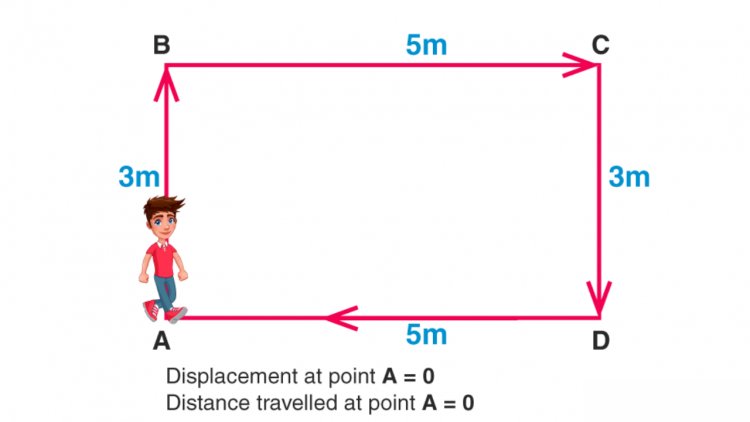Distance and Displacement
Distance is a scalar quantity that refers to how much ground an object has covered during its motion. Displacement is a vector quantity that refers to how far out of place an object is ; it is the object's overall change in position.

Distance and Displacement
Distance and displacement are two quantities that may seem to mean the same thing yet have distinctly different definitions and meanings.
- Distance is a scalar quantity that refers to "how much ground an object has covered" during its motion.
- Displacement is a vector quantity that refers to "how far out of place an object is"; it is the object's overall change in position.
To test your understanding of this distinction, consider the motion depicted in the diagram below. A physics teacher walks 4 meters East, 2 meters South, 4 meters West, and finally 2 meters North.

Even though the physics teacher has walked a total distance of 12 meters, her displacement is 0 meters. During the course of her motion, she has "covered 12 meters of ground" (distance = 12 m). Yet when she is finished walking, she is not "out of place" - i.e., there is no displacement for her motion (displacement = 0 m). Displacement, being a vector quantity, must give attention to direction. The 4 meters east cancels the 4 meters west; and the 2 meters south cancels the 2 meters north. Vector quantities such as displacement are direction aware. Scalar quantities such as distance are ignorant of direction. In determining the overall distance traveled by the physics teachers, the various directions of motion can be ignored.
What's Your Reaction?




















